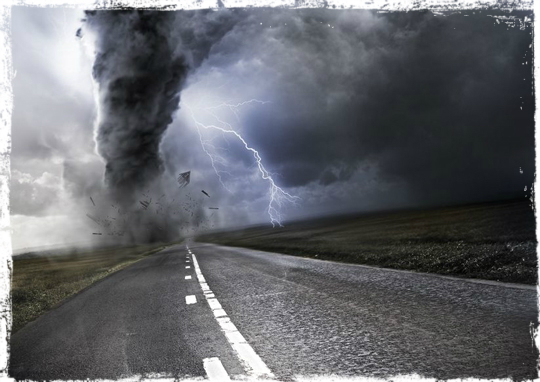
The facts are tornadoes cause an average of 70 fatalities and 1,500 injuries in the U.S. each year. Tornadoes can have rotating winds of more than 250 mph. Tornadoes can be a mile wide in some instances and some have stayed on the ground for over 50 miles (Missouri Storm Aware).
- The average tornado moves Southwest to Northeast, but tornadoes have been known to move in any direction
- “Tornado Alley” is a nickname given to an area in the southern plains of the central U.S. that regularly experiences a high number of tornadoes each year
- Tornadoes in this area typically happen in late spring and sporadically in the early fall
- Tornados typically follow a severe thunderstorm
In 2007, the EF-scale replaced the original F-scale in all tornado damage surveys in the United States
- EF0 -> 65-85 mph
- EF1 -> 86-110 mph
- EF2 -> 111-135 mph
- EF3 -> 136-165 mph
- EF4 -> 166-200 mph
- EF5 -> over 200 mph
Tornadoes are deadly and the most deaths and injuries occur from flying debris. Other factors causing death are mobile homes rolling or flipping over and downed power lines. Other causes of death and injury can include fires from ruptured gas lines and resulting explosions. Cars, trucks and larger vehicles such as semi-trucks can be rolled over during a tornado causing death and injury as well. Being in any type of vehicle is dangerous during a tornado.
If you are in a vehicle and cannot avoid the path of a tornado, you should seek shelter away from the vehicle. It is never recommended that you attempt to outrun a tornado in any type of vehicle. Get flat to the ground preferably in a depression but not in a culvert or drainage ditch because of the dangers of flash flooding. Avoid power lines/light poles, trees and overhead signs that are found along highways.
The safest place during a tornado is inside your home or commercial structure. This does not apply to anyone living in a mobile home however. If you live in a mobile home, you must seek shelter elsewhere once alerts and warnings are broadcast (CDC, 2014).
Experts have determined that an interior room on the lowest floor in a home or building is the safest place during a tornado, other than a below ground level basement or an above ground shelter specifically designed as a tornado shelter. These types of shelters can be secured to garage floors and in other areas of the home. You want as many walls between you and the outside as possible, to prevent injury from flying debris.
Tornadoes cannot necessarily be predicted. Experts can only determine the weather conditions are right for a tornado to occur.
A tornado warning means there is one on the ground or one has touched down. Alerts and advisories mean the weather conditions are right and one can occur at any moment anywhere in the area.
Basements of course provide excellent shelter as long as the basement is below ground level. Some homes will have cement block walled basements (called walkout basements) that may actually provide less protection than an interior room in the home, because there may only be one wall, which is above ground between you and the storm.
Having a storm shelter is ideal but keep in mind that most shelters designed for protection from tornadoes are only intended for short stays. You must be able to bring your supplies into the shelter with you so they are not destroyed by the storm.
Regardless of where you seek protection you must have your emergency supplies with you. You can expect loss of electrical power, loss of water supply even if you have your own well, as well as, loss of gas for cooking and heating. Even if your home does not sustain any damage, the utilities will likely be disrupted.
Considerations
Have all documents pertaining to your home packed so they can be carried with you in the event of a tornado. You will need these documents to file insurance claims and to file for disaster relief.
Carry personal identification with you at all times after the storm has passed. You may have to verify you live in the area to re-enter if you left for any reason. This is to prevent non-residents from entering an area to reduce looting and other criminal activity.
You can expect curfews in certain areas, and possibly National Guard Troops will be on scene to help with security and rescue/recovery operations. The troops may in some cases, have the authority to detain citizens, so be prepared to show identification and proof you own a home in the devastated area.
CDC. (2014). Retrieved 2014, from http://www.bt.cdc.gov/disasters/tornadoes/during.asp
Missouri Storm Aware. (n.d.). Retrieved 2014, from http://stormaware.mo.gov/tornado-facts-history/